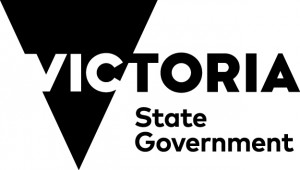Knowledge Exchange September
SSP/RSP Physical Activity: Customer Experience & Journey
The Customer Experience and Journey Session was held on Wednesday 28 September, facilitated by Mad4Leaders and attended by 15 SSAs and 2 SSAs.
In summary, the group considered the relationships between a program and their potential participants, and their connection to the Six Core Human Needs.
- Certainty – having routine, being in control of ourselves or our environment. Seek less risk taking.
- Variety – need for the unknown and some adventure, enjoy change or new experiences.
- Significance - feeling unique, important or special. Giving service to others. Doing something that you are proud of.
- Connection - a strong feeling of closeness or union with someone or something.
- Growth - an expansion or our capacity. If we group, we feel good about ourselves, our self worth goes up our confidence builds.
- Contribution – a sense of service and focus on helping and giving support to others.
Questions posed by the group included – who is my customer, how will the activity benefit the participants – how will it make their life better and introspection on what is special or unique about the particular program or sport and how that can be used to address specific needs.
When considering how to structure or attract people to a program, contemplation around how to address people’s anxiety and meet their needs across the scale of their desire for certainty and their need for variety. By considering people’s anxieties about participation, which may range from a need for the activity to be as quick as possible for those that are time poor or for there to be a social aspect to the participation, finding a program that considers these factors will remove some of the barriers to participation.
Significance and connection grouped together formed the majority of the discussion. To ensure that programs delivered a connection, consideration should be given to different formats that could be suitable for different people and allowed people gain a sense of significance - through both participation in the actual activity and potentially volunteering or social interactions as a side effect of their participation.
As part of the presentation and in the project sharing sessions, the teams discussed that the likelihood of continued participation in the program increased with the opportunity for growth and contribution. The initial engagement with the sport was often seen as the most difficult part, but that once people were engaged, they may return to the sport, sometime more than once across their lifestyle, in different capacities.
The sessions asked the participants to consider these core needs as part of their planning for a program, or as part of their evaluation of the programs currently in place to understand how changes to format, marketing or retention might be undertaken to ensure these needs are being meet.
The next session will be held on 27 October is focussed on Local Area Marketing, and how to connect specific local markets.
Return to Knowledge Exchange or select your next article:
You may also be interested in...
Knowledge Exchange November
Learning from sport – the SurfGroms licensing model

Surfing Australia’s modified junior program – Weetbix SurfGroms – started in 2011 with the help of funding from the Australian Sports Commission
Knowledge Exchange October
Case Study: Building an evidence base to increase participation in Lawn Bowls

In 2012, Bowls Australia (BA) engaged with La Trobe University’s Centre for Sport and Social Impact to complete research into lawn bowls participation, with the goal to build a base of evidence to support decision making to increase participation
Knowledge Exchange August
Tools/Resources:
Target Audience - Aboriginal & Torres Strait Islander Community

Sports Drinks are Gammin! A new campaign has been launched using local Aboriginal sporting role models to urge their Victorian Aboriginal community to spread the message that sports drinks are no good for us, they’re gammin! (fake/not real)




















